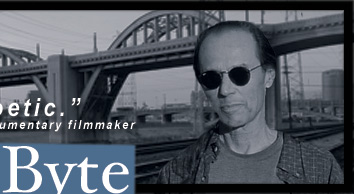
 |
Resisting the Signature Capture Pad
If there is a God and he, she, or it has a signature (and by signature I don’t mean God’s cell phone or biometric signature, or creations like the Grand Canyon or, heaven forbid, man, but a handwritten stylized depiction of G. O. D’s name — a signature) I think it would be big and graceful. Electronic business world transactions, however, deny those characteristics. Instead, that world is quick and efficient. It erodes the elegance of the skill base where signatures reside. There are, however, ways we can push back. When in the course of human events it becomes necessary for one people to dissolve the bands which have connected them to technology, they will, God willing, do so. In the world of the electronic business, signatures live in purgatory. We swipe our credit cards though a reader and tap to verify the amount. Then the LCD lit screen requests that we perform a most unnecessary and humiliating act — sign our names on signature capture pad. The result, as I’m sure you know, is nothing close to the signatures that we, as flesh and blood, spend so many years refining, but rather a pathetic nail scratch wriggle. The act of signing your name should be a powerful aesthetic moment signifying a commitment to certain ideas or agreements. A signature can be a beautiful thing. John Hancock, Walt Whitman, Mark Twain, Mickey Mantle, Queen Elizabeth and, of course, Liberace all had great script. Signature capture pads would have destroyed those signatures. To say a capture pad captures the nuance, swirl and ego of a signature is like saying a television captures the human soul. How did our signature devaluation began? Before signature capture pads, there was the fax machine. In the 1980’s, the business world began using these primitive techno facsimulators for contract signatures. This brought into question the validity of electronic script. It was hard to imagine how these barely legible phone line signatures could be legitimate. But in the name of quick fixes, state courts began ruling that fax signatures (or faux signatures, if you will) carried the same legal weight as if the phone line separated parties in contract were witnessing the signing in a room together. The deceit had begun and eventually the capture pad was born. On June 30, 2000 — in a slap on the hands of our writing expression — President William Jefferson Clinton signed the "Electronic Signatures in Global and National Commerce Act." All was right with the electronic business world — not so much for the world of signatures. Some of us, however, resist. Today, instead of demeaning our signatures by signing the capture pad, we use capture pads to create a new world of tagging. We never mark a capture pad with our pen on paper signature. Sometimes, we tag “X”. The signature capture pad doesn’t seem to mind and neither does the checkout clerk. As far as commerce goes, the plastic is still doing its job. The website, Credit Card Prank reports that capture pad artists have filled in signature request boxes with stick men, Egyptian hieroglyphs, complicated grids, pornographic etchings and forgery autographs of fantasy figures like Mickey Mouse, Porky Pig, Zeus, and, Justin Beiber. Everything from the vulgar EAT SHIT to the criminal I STOLE THIS CARD has found a home on the capture pad signature line. It’s delusional to think that the scrawling mess that capture pads reproduce as our signatures are actually our signatures. Electronic business signatures are more do-da pomp than transaction commitment. For those of us who take our signatures seriously, the capture pad is a useless degrading piece of technojunk. If someone wants our signature, we’ll gladly comply, provided a pen and paper are involved. Heaven knows how to put a proper price upon its goods; and it would be strange indeed if so celestial an article as a finely scripted signature should not be highly rated.— Nathan
Callahan © NathanCallahan.com / Nathan Callahan / all rights reserved |
Broadcasting Fridays at 8:50 am from KUCI 88.9 fm Orange County, California
|